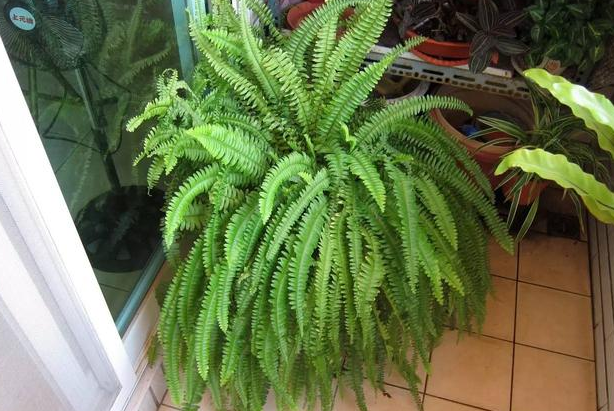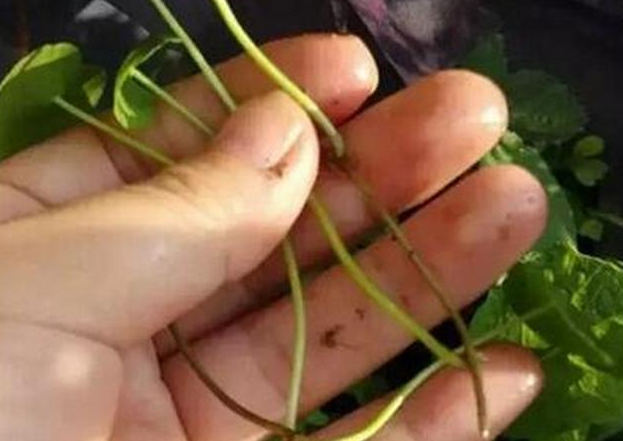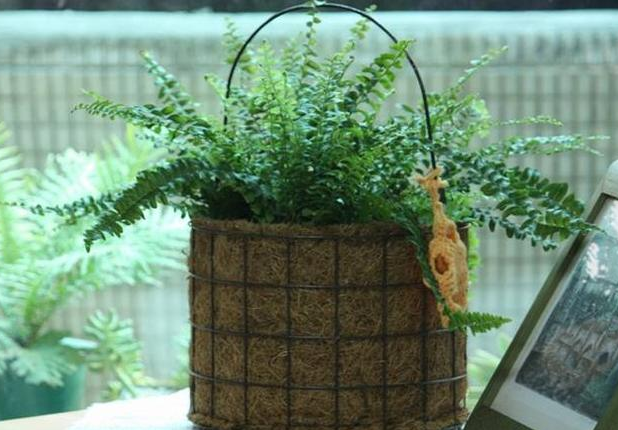Can the vigorous growth of Boston ferns be hydroponically cultivated?
Boston fern, this is a lot of people like, this Boston fern is still very good-looking, what is the way for Boston fern to grow exuberantly? Can Boston fern be hydroponically cultured:

The way Boston ferns thrive:
1. Lighting
The bright light in the indoor space can be maintained to avoid the position where the sun shines directly.
If placed on the windowsill, it is recommended to rotate the potted plant about 1pm 4 times a week to make the potted plant receive uniform indirect sunshine.
When the light is insufficient, the leaves will appear thin, thin and withered easily, but if the light is too strong, the leaves will turn gray-green.
2. Watering
Keep the soil evenly moist during the growing period, and avoid excessive watering that causes the roots of the plant to soak in water, otherwise it will lead to rotting roots.
If it is a hanging fern, the potted soil usually dries quickly, so special attention should be paid to the frequency of watering.
3. Humidity
Boston kidney fern needs to be placed in a high humidity environment, and when placed indoors, it is often (several times a day) to use a sprayer to spray water on the plant to increase the humidity of the air around the leaves.
If you are planting outdoors, you should pay attention to the problem of rapid drying caused by shade and wind, and spray water frequently.
4. Temperature
The curing temperature should be kept at 16-24 ℃ and should be kept indoors in winter to avoid cold damage.
5. Soil selection
Potted Boston ferns are recommended to use peat or peat soil, of course, to add appropriate ordinary soil and some river sand to the culture soil as a drainage medium.
6. Fertilization
Fertilize once every 2 months, foliage plant nutrient solution: each time a small pot diluted with water (1:1).
7. Pruning
Browning branches and leaves, should be pruned immediately, trim slightly withered old leaves or branches and leaves that die in a low position (unable to get the right amount of light), or ignore them. It is recommended to use sharp shears to keep the plant beautiful.
8. Move the basin
The pots should be moved as the roots of the plants continue to grow and fill the pots. Spring is the most appropriate time for Boston kidney ferns to change pots.
It is recommended that the pot be changed every 1-2 years, and if you do not want to change the pot in a flowerpot that is 1 size larger than the original, it is still recommended to remove 25% of the roots and control the plant size in spring.
Can Boston fern be hydroponically cultured:
Boston ferns can be hydroponically cultivated.
This is the end of the way for Boston ferns to grow well, and it can also be hydroponically cultivated.
Can Boston ferns be hydroponically cultured?
Boston fern can be cultivated not only in soil, but also in water, and the method of water culture is simpler.
The above is the introduction of whether Boston fern can be hydroponically cultured. Let's take a look at the planting methods and cultivation techniques of Boston fern.
Ferns do not need seeds and spores to reproduce. Pteridophytes use stems to reproduce.
Flower bonsai network guide: today the flower bonsai network Xiaobian introduces to you the article about breeding ferns without seeds and spores, ferns using stems to reproduce, let's take a look.
There are many species of indoor ornamental ferns, such as bird's nest fern, kidney fern and Boston fern. Let's take a look at the breeding methods of kidney fern and Boston fern. Kidney fern can also reproduce with spores, while Boston fern can only use ramet and stem to reproduce. Let's take a look.
I. introduction of split-plant propagation
Method 1: directly take the new root ball growing in the periphery of the root to propagate.
Method 2: use a sharp knife to cut the larger root ball to propagate.
Second, the choice of soil for raising seedlings:
Peat soil or general culture soil is recommended for soil propagation.
It is recommended to use cutting or seedling sponges for hydroponic propagation.
Third, how to propagate with a stem
Let the Boston kidney fern walk its stem and cut it off (ramet) before planting it when a new plant (seedling) grows.
How can we grow small branches quickly?
In normal maintenance, the medium should be kept in a slightly wet state, the higher humidity conditions needed by Boston ferns should be maintained, and direct sunlight should be avoided during breeding.
If the air humidity is high, there will be no problem even if the soil is slightly dry, lateral buds can only grow when the humidity is high, and the roots will be healthy only if they have a chance to breathe, so air humidity is also an important key.
As for watering is actually very simple, lift the edge of the basin blade slightly with a sharp mouth kettle to pour water, or put it in a shallow water plate for about half an hour to let it capillarity up to absorb water, usually pad wide water plate to provide air humidity, but do not soak the basin bottom.
Why do the leaves turn yellow?
The leaves are dry brown or brittle (so-called browning), usually because the air is too dry with too much salt.
Avoid leaves near heat sources or power sockets, as drastic changes in temperature around Boston kidney fern plants can also cause browning.
If the leaves yellowing or withering (non-browning) is usually caused by overwatering, you should immediately stop watering less, cut off the damaged leaves, and check the roots of the plants to see if they have rotted. If the roots of the plants are mostly black, you should throw away the whole plant.
Pteridophytes are tropical plants, normal temperature water should be used when watering, and low water temperature should be avoided in winter.
Fifth, pest control of ferns:
1. Scale insects
Shell insects are one of the most common diseases and insect pests of Boston kidney fern. They look like small brown CDs and are easy to be found in compound leaves. When found, they should be scraped off with their fingernails or removed with similar texture tools.
2. Red spider
Red spiders are not common, but they are more harmful to Boston fern plants than shell worms. If the presence of spider silk between compound leaves is evidence of damage by red spiders, the affected compound leaves should be cut off when found.
If the weather is warm enough, red spiders can be washed off with warm water slightly higher than room temperature. Regular spray can not only help Boston ferns moisturize, but also prevent dry red spiders from invading.
Insecticides should be avoided in dealing with diseases and insect pests of Boston ferns, as ferns are vulnerable to chemicals.
- Prev

How to cut the rhizome and how to cultivate it in water?
Copper money grass, this is a lot of people like breeding, this copper money grass is so likeable, how to cut it? How to hydroponically cultivate the roots of Codonopsis grossedentata: 1. First, choose healthy branches from the pots you raise. Choose the ones with full leaves and tight branches
- Next

How do ferns reproduce yellow leaves?
Pteridophytes, this is a lot of people like breeding, this pteridophyte is so good-looking, how do ferns reproduce? What about the yellow leaves of pteridophytes: how to reproduce ferns: introduction to split-plant reproduction, method 1: directly take the new root balls growing in the periphery of the roots to reproduce
Related
- Fuxing push coffee new agricultural production and marketing class: lack of small-scale processing plants
- Jujube rice field leisure farm deep ploughing Yilan for five years to create a space for organic food and play
- Nongyu Farm-A trial of organic papaya for brave women with advanced technology
- Four points for attention in the prevention and control of diseases and insect pests of edible fungi
- How to add nutrient solution to Edible Fungi
- Is there any good way to control edible fungus mites?
- Open Inoculation Technology of Edible Fungi
- Is there any clever way to use fertilizer for edible fungus in winter?
- What agents are used to kill the pathogens of edible fungi in the mushroom shed?
- Rapid drying of Edible Fungi

